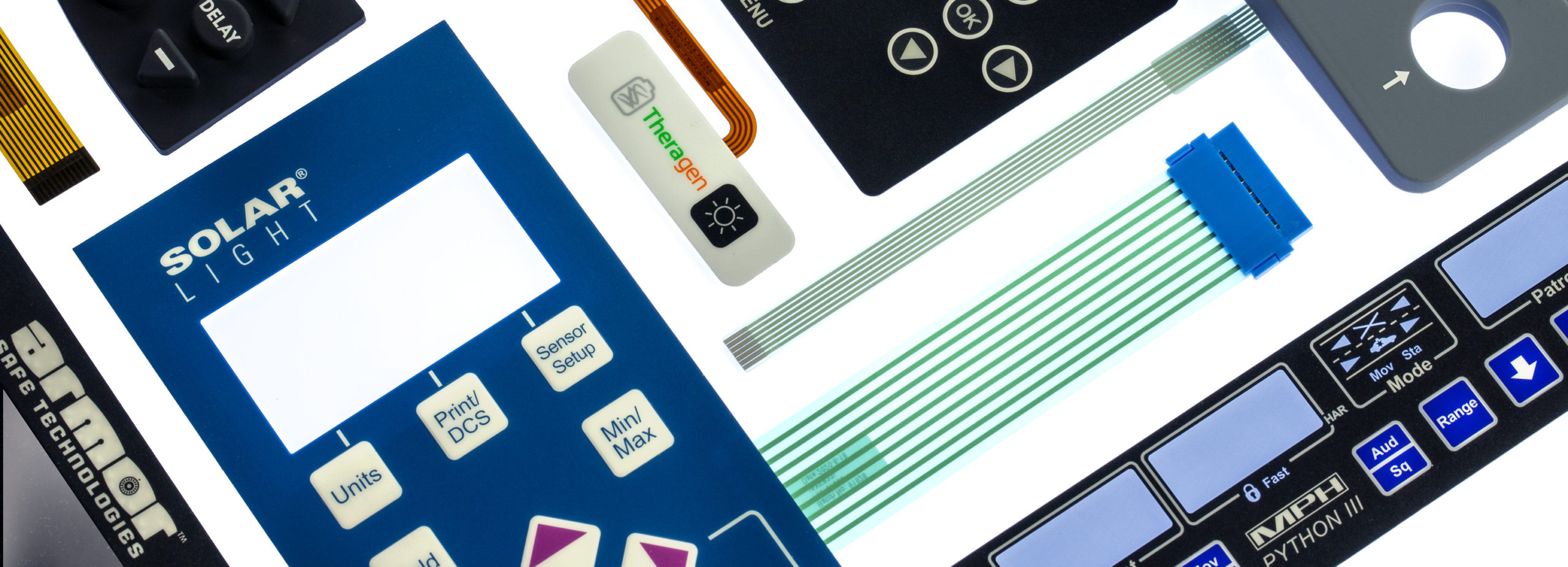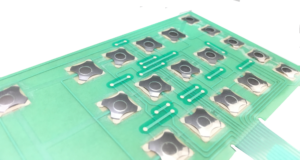Membrane Switches: A Cost-Effective Solution for Advanced Control Systems
Membrane Switches: A Cost-Effective Solution for Advanced Control Systems
Blog Article
Exploring the Advantages of Membrane Layer Switches for Modern Electronic Devices
The expedition of membrane layer buttons in contemporary digital tools offers an interesting perspective on their myriad advantages, especially in terms of design adaptability, longevity, and cost-effectiveness. These interfaces not only stand up to harsh environmental conditions yet also offer a high level of customization, which is significantly vital in today's affordable market. As industries continue to evolve, the duty of membrane layer switches in improving customer experience and functional efficiency warrants more detailed exam. Comprehending just how these parts can shape the future of electronic applications may reveal understandings that might influence style and manufacturing approaches substantially.
Benefits of Membrane Switches
Membrane layer buttons are increasingly favored in modern-day electronic devices due to their many benefits. Among the primary advantages is their portable design, which permits space-efficient assimilation right into different tools. This slim account not only preserves space but additionally adds to the overall aesthetic charm of electronic items.
Another advantage is their sturdiness. Membrane layer buttons are normally resistant to moisture, dust, and pollutants, making them optimal for usage in environments where exposure to extreme conditions is a worry. This resistance prolongs the life-span of the switches, lowering the requirement for regular substitutes and maintenance.
Moreover, membrane changes deal exceptional tactile responses, improving user experience. The responsive response is frequently developed to supply a gratifying experience upon activation, which can enhance individual complete satisfaction and effectiveness.
Additionally, the manufacturing procedure of membrane layer buttons is cost-effective, permitting reduced production expenses contrasted to conventional mechanical buttons. This cost makes them suitable for a variety of applications, from consumer electronic devices to commercial machinery.
Layout Flexibility and Customization
The layout versatility and modification choices used by membrane layer switches over better enhance their allure in modern-day electronics. These buttons can be customized to meet particular visual and practical demands, permitting suppliers to produce devices that line up closely with brand name identification and individual preferences. With numerous choices in terms of shades, shapes, and sizes, membrane layer switches can effortlessly incorporate right into diverse item designs, whether for customer electronic devices, industrial applications, or clinical devices.
Furthermore, the ability to integrate graphics and signs directly onto the button surface area enhances use while reducing the requirement for added labeling. This combination not only simplifies production processes but additionally adds to a sleeker total look. The design can be additional personalized through features such as backlighting, responsive feedback, and multi-layer buildings, offering boosted user communication.
Longevity and Ecological Resistance

Moreover, membrane switches can be engineered to be chemically resistant, making them appropriate for applications in industrial atmospheres where exposure to solvents and cleansing agents is common. The encapsulation of electronic components within the membrane layer structure offers additional defense versus environmental tensions, ensuring dependable efficiency also in difficult problems.
In addition to physical longevity, membrane changes exhibit outstanding resistance to UV light, stopping degradation and staining with time (membrane switch). This particular is especially valuable for outdoor applications, where prolonged direct exposure to sunlight can compromise other button kinds
Eventually, the resilience and environmental resistance of membrane switches over make them a suitable choice for a large range of modern digital tools, from clinical tools to consumer electronic devices, guaranteeing consistent performance and individual complete satisfaction across various applications.
Cost-Effectiveness in Manufacturing
Cost-effectiveness in manufacturing is a substantial benefit of membrane buttons, making them a preferred choice for suppliers in various markets. The manufacturing process of membrane layer switches generally involves less products compared to conventional switches, which reduces basic material prices. This streamlined manufacturing process not only saves cash check my reference yet additionally reduces waste, lining up with contemporary sustainability objectives.
Moreover, membrane buttons can be produced using automated strategies, permitting for high-volume outcome with decreased labor prices. The combination of innovative printing innovations even more boosts efficiency, enabling suppliers to accomplish complex styles and functionalities without sustaining considerable added costs. This scalability guarantees that manufacturing can adjust to changing market needs without compromising quality or enhancing costs.

Additionally, the light-weight nature of membrane changes adds to set you back financial savings in shipping and handling, as well as in the overall style of digital devices. By getting rid of large components, manufacturers can maximize the total item style, consequently improving market competition. In general, the cost-effectiveness of membrane switches not only benefits manufacturers economically yet additionally helps with advancement and fast product advancement in the dynamic landscape of modern-day electronic devices.
Applications in Various Industries
Flexibility attracts attention as a hallmark of membrane buttons, allowing them to locate applications across a wide variety of sectors. In the healthcare sector, these switches are indispensable to medical gadgets, giving user-friendly interfaces for tools like infusion pumps and diagnostic devices. Their resistance to wetness and very easy cleaning make them ideal for settings calling for rigid hygiene requirements.
In the automobile market, membrane layer buttons add to the capability of dashboards and control board, using a sleek, contemporary appearance while ensuring sturdiness versus severe problems. Their light-weight design likewise sustains overall vehicle performance.

In addition, industrial machinery uses membrane switches for operational controls. Their durable nature and personalized attributes accommodate the particular demands of varied applications.
Final Thought
Finally, membrane layer changes offer substantial benefits for modern-day electronics, consisting of style versatility, toughness, and cost-effectiveness. membrane switch. Their adjustable functions and resistance to environmental variables make them suitable for a vast array of applications across numerous markets. As technological demands proceed to develop, the flexibility and performance of membrane switches over placement them as an important element in boosting individual experience and driving development within the competitive landscape of electronic tools
Report this page